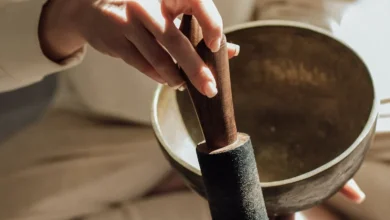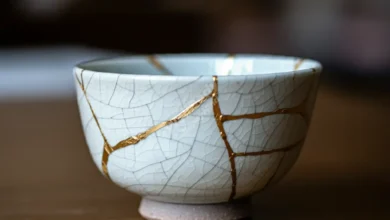Celtic Imbolc: Renewal for Modern Life

Introduction: Discovering Imbolc – A Celtic Festival of Renewal
Have you ever felt the stirring of hope as winter begins to loosen its grip? This feeling of renewal is at the heart of Imbolc, an ancient Celtic festival that celebrates new beginnings and fresh starts. Today, we’ll explore how this age-old tradition can bring warmth and inspiration to our modern lives.
Imbolc marks an important point in the Celtic calendar. It’s a time when the first signs of spring begin to appear, promising warmer days ahead. This festival focuses on themes of renewal and purity, offering a chance to shake off the winter blues and embrace new possibilities.
The Roots of Imbolc: A Celtic Tradition
Imbolc’s story begins in the mists of ancient Celtic culture. Long ago, our ancestors marked this time as a crucial turning point in the year. They saw it as a bridge between seasons, when the harsh winter began to give way to the promise of spring.
At the center of Imbolc stands Brigid, a powerful Celtic goddess. She was seen as a guardian of hearth and home, a protector of new life, and a symbol of creativity. Brigid’s influence was so strong that when Christianity spread to Celtic lands, her festival evolved into St. Brigid’s Day.
This blending of old and new beliefs shows how deeply rooted Imbolc is in Celtic culture. It reminds us that even as times change, our need for renewal and hope remains constant.
When Do We Celebrate Imbolc?
Imbolc is typically celebrated on February 1st or 2nd. This timing is no accident. It falls halfway between the winter solstice and the spring equinox, marking a key point in the sun’s journey across the sky.
Why does this matter? For our ancestors, this celestial midpoint signaled that days were getting longer and spring was on its way. It was a time of hope, when people could start looking forward to warmer days and new growth.
Today, even if we don’t follow the agricultural calendar as closely, we can still feel this shift. Have you noticed the days getting a bit longer? That’s the magic of Imbolc at work, reminding us that change is always possible.
Key Symbols and Traditions of Imbolc
Imbolc is rich with meaningful symbols and traditions that have stood the test of time. Let’s explore some of these powerful elements that make this festival so special.
Fire and Light: Sparking New Beginnings
Fire plays a central role in Imbolc celebrations. It represents the returning warmth of the sun and the spark of new life. Here are some traditional fire rituals associated with Imbolc:
- Lighting candles in each room of the house
- Building a bonfire and dancing around it
- Carrying torches in procession
- Creating a Brigid’s flame, kept burning throughout the festival
These fire rituals remind us of the power of light to dispel darkness, both literally and figuratively.
Water and Purification: Cleansing for a Fresh Start
Water, symbolizing purity and cleansing, is another key element of Imbolc. Common purification practices include:
- Taking a ritual bath with herbs or essential oils
- Visiting holy wells or springs
- Collecting morning dew for its believed healing properties
- Performing a house cleansing with blessed water
These practices help people let go of the old and prepare for new beginnings.
The Brigid’s Cross: A Symbol of Protection
The Brigid’s Cross is a distinctive symbol of Imbolc. Here’s a quick guide to making one:
- Gather rushes or straw
- Fold a rush in half to create a center
- Weave additional rushes around the center, turning at right angles
- Secure the ends and trim
This simple cross is believed to protect homes from fire and evil spirits.
Seeds and New Growth: Planting Hope
Seeds represent the potential for new life and are closely tied to Imbolc. In ancient times, this was when farmers began preparing for the planting season. Today, we can honor this tradition by:
- Starting an indoor herb garden
- Planting seeds in pots to nurture until spring
- Creating seed bombs for later use in gardens
These activities connect us to the cycle of growth and remind us of life’s endless potential.
Modern Celebrations of Imbolc
While Imbolc has ancient roots, it continues to be celebrated in various ways today.
Neo-pagan and Wiccan Observances
Many modern pagans and Wiccans celebrate Imbolc as one of the eight sabbats or festivals in the Wheel of the Year. They might:
- Perform rituals to honor Brigid
- Create altars with symbols of the season
- Meditate on personal goals and renewal
Irish Cultural Celebrations
In Ireland, Imbolc has evolved into St. Brigid’s Day, a national holiday. Celebrations often include:
- Crafting St. Brigid’s crosses
- Visiting holy wells
- Participating in parades and festivals
Integration into Contemporary Spirituality
Many people, regardless of their spiritual background, are finding value in Imbolc traditions. They might:
- Practice mindfulness and reflection
- Set intentions for the coming months
- Perform personal renewal rituals
These modern interpretations show how Imbolc’s themes of renewal and hope resonate across cultures and belief systems.
Imbolc Rituals for Personal Renewal
Embracing the spirit of Imbolc can be a powerful way to refresh your life and set new intentions. Here are some simple rituals you can perform at home to connect with the energy of renewal:
- Candle Meditation: Light a white candle and spend a few minutes in quiet reflection. Visualize the flame burning away old habits or negative thoughts, making room for new growth.
- Spring Cleaning: Engage in a thorough house cleaning. As you declutter and organize, imagine clearing space in your life for new opportunities and experiences.
- Seed Planting Ceremony: Plant a few seeds in a small pot. As you plant each seed, state an intention or goal you wish to nurture in the coming months.
- Brigid’s Mantle Ritual: Before bed, leave a piece of cloth outside. In Celtic tradition, it’s believed that Brigid blesses the cloth overnight, imbuing it with healing properties.
- Gratitude Journal: Start a journal where you write down three things you’re grateful for each day. This practice can help shift your focus towards positivity and abundance.
The Significance of Imbolc in Today’s World
While Imbolc has ancient roots, its themes are remarkably relevant to our modern lives. Let’s explore why this festival still holds importance today.
Connecting with Seasonal Changes and Nature
In our fast-paced, technology-driven world, it’s easy to lose touch with nature’s rhythms. Celebrating Imbolc can help us:
- Become more aware of subtle seasonal changes
- Appreciate the cyclical nature of life
- Find comfort in the predictability of natural patterns
By tuning into these natural cycles, we can ground ourselves and find a sense of stability amidst life’s chaos.
The Importance of Renewal and Fresh Starts
Modern life is full of stressors and challenges. Imbolc reminds us of the power of new beginnings. It encourages us to:
- Reflect on our lives and identify areas for improvement
- Set meaningful goals and intentions
- Believe in the possibility of positive change
This focus on renewal can be especially beneficial for mental health, offering hope and motivation during the often-difficult winter months.
Embracing Purity and Letting Go of the Old
In a world that often feels cluttered and overwhelming, Imbolc’s emphasis on purity and simplicity is refreshing. It invites us to:
- Declutter our physical spaces
- Simplify our routines and commitments
- Release emotional baggage and limiting beliefs
By letting go of what no longer serves us, we create space for new growth and opportunities.
Fostering Community and Tradition
While many of us may not have grown up celebrating Imbolc, embracing this festival can help us:
- Connect with our cultural heritage
- Build new traditions with family and friends
- Feel part of something larger than ourselves
In an increasingly individualistic society, these connections can provide a sense of belonging and purpose.
Imbolc-Inspired Activities for Modern Life
While we may not all celebrate Imbolc in its traditional form, we can still embrace its spirit in our daily lives. Here are some activities that capture the essence of Imbolc and can bring a sense of renewal to your routine:
- Start a 30-day challenge: Choose a new habit or skill you’d like to develop and commit to practicing it daily for a month.
- Create a vision board: Gather images and words that represent your goals and aspirations for the coming months. Display it somewhere you’ll see it often.
- Try a digital detox: Spend a day (or more) unplugged from technology. Use this time to connect with nature or engage in creative pursuits.
- Learn about herbal remedies: Research traditional healing herbs associated with Imbolc, like chamomile or lavender, and explore ways to incorporate them into your life.
- Host a seed-swapping party: Invite friends to exchange seeds and share gardening tips, fostering community and connection.
- Practice fire scrying: Safely light a candle and spend time gazing into the flame, allowing your mind to wander and insights to emerge.
- Volunteer for a local environmental project: Honor the earth by participating in a community clean-up or tree-planting event.
These activities can help you connect with the themes of Imbolc in practical, modern ways.
Conclusion: Embracing the Spirit of Imbolc in Your Life
As we’ve explored the rich traditions and symbolism of Imbolc, it’s clear that this ancient Celtic festival offers valuable lessons for our modern lives. From its emphasis on renewal and purification to its celebration of hope and new beginnings, Imbolc provides a timely reminder of the cyclical nature of life and the potential for growth and change.
In today’s fast-paced world, taking time to pause and reflect can be a powerful act of self-care. Imbolc invites us to do just that – to look inward, to clear out what no longer serves us, and to plant the seeds of our future aspirations.
Whether you choose to celebrate Imbolc through traditional rituals, modern adaptations, or simply by embracing its spirit of renewal in your daily life, remember that you have the power to initiate positive change. Just as the first stirrings of spring begin beneath the cold ground, your own growth and transformation can start with small, intentional steps.
As we move forward from this exploration of Imbolc, I encourage you to carry its energy with you. Look for signs of renewal in your own life, nurture your dreams and aspirations, and trust in the cycle of growth and change.
What new beginnings will you embrace? How will you honor the spirit of renewal in your life? The choice is yours, and the possibilities are as boundless as the coming spring.



